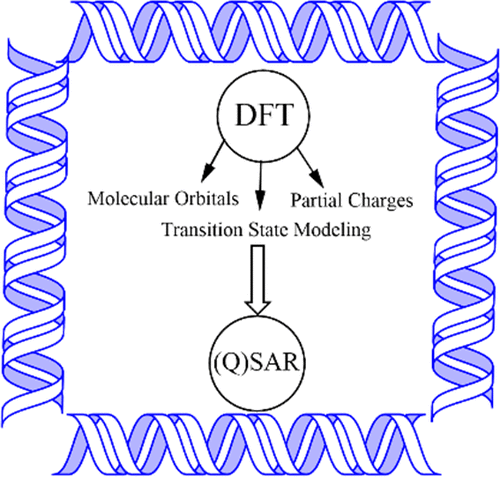当前位置:
X-MOL 学术
›
Chem. Res. Toxicol.
›
论文详情
Our official English website, www.x-mol.net, welcomes your feedback! (Note: you will need to create a separate account there.)
Density Functional Theory in the Prediction of Mutagenicity: A Perspective
Chemical Research in Toxicology ( IF 4.1 ) Pub Date : 2020-07-09 , DOI: 10.1021/acs.chemrestox.0c00113 Piers A Townsend 1 , Matthew N Grayson 2
Chemical Research in Toxicology ( IF 4.1 ) Pub Date : 2020-07-09 , DOI: 10.1021/acs.chemrestox.0c00113 Piers A Townsend 1 , Matthew N Grayson 2
Affiliation

|
As a field, computational toxicology is concerned with using in silico models to predict and understand the origins of toxicity. It is fast, relatively inexpensive, and avoids the ethical conundrum of using animals in scientific experimentation. In this perspective, we discuss the importance of computational models in toxicology, with a specific focus on the different model types that can be used in predictive toxicological approaches toward mutagenicity (SARs and QSARs). We then focus on how quantum chemical methods, such as density functional theory (DFT), have previously been used in the prediction of mutagenicity. It is then discussed how DFT allows for the development of new chemical descriptors that focus on capturing the steric and energetic effects that influence toxicological reactions. We hope to demonstrate the role that DFT plays in understanding the fundamental, intrinsic chemistry of toxicological reactions in predictive toxicology.
中文翻译:

致突变性预测中的密度泛函理论:一个观点
作为一个领域,计算毒理学关注的是在计算机中使用模型来预测和理解毒性的起源。它速度快,相对便宜,并且避免了在科学实验中使用动物的伦理难题。从这个角度来看,我们讨论了计算模型在毒理学中的重要性,特别关注可用于致突变性预测毒理学方法(SAR 和 QSAR)的不同模型类型。然后,我们关注量子化学方法,例如密度泛函理论 (DFT),以前如何用于预测诱变性。然后讨论了 DFT 如何允许开发新的化学描述符,专注于捕获影响毒理学反应的空间和能量效应。我们希望展示 DFT 在理解基本原理方面所起的作用,
更新日期:2020-07-09
中文翻译:

致突变性预测中的密度泛函理论:一个观点
作为一个领域,计算毒理学关注的是在计算机中使用模型来预测和理解毒性的起源。它速度快,相对便宜,并且避免了在科学实验中使用动物的伦理难题。从这个角度来看,我们讨论了计算模型在毒理学中的重要性,特别关注可用于致突变性预测毒理学方法(SAR 和 QSAR)的不同模型类型。然后,我们关注量子化学方法,例如密度泛函理论 (DFT),以前如何用于预测诱变性。然后讨论了 DFT 如何允许开发新的化学描述符,专注于捕获影响毒理学反应的空间和能量效应。我们希望展示 DFT 在理解基本原理方面所起的作用,



























 京公网安备 11010802027423号
京公网安备 11010802027423号